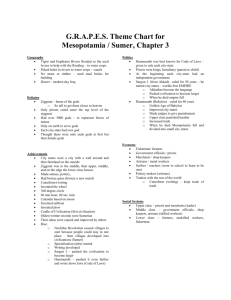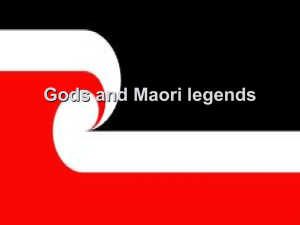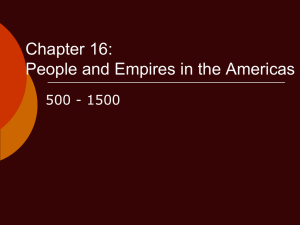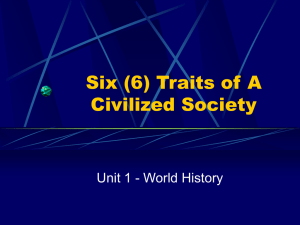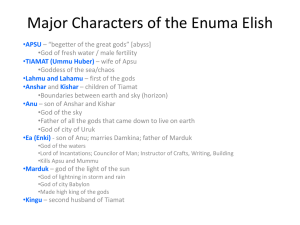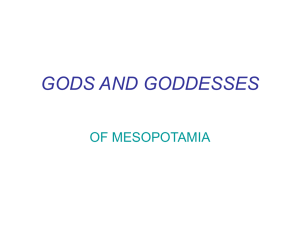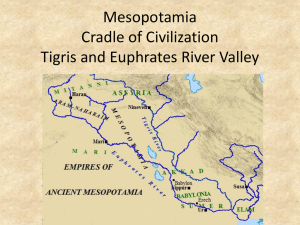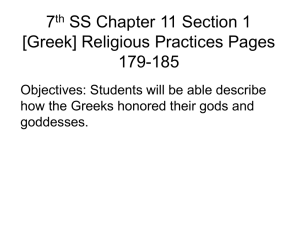Mesopotamia - Mr. Bruce`s Class
advertisement
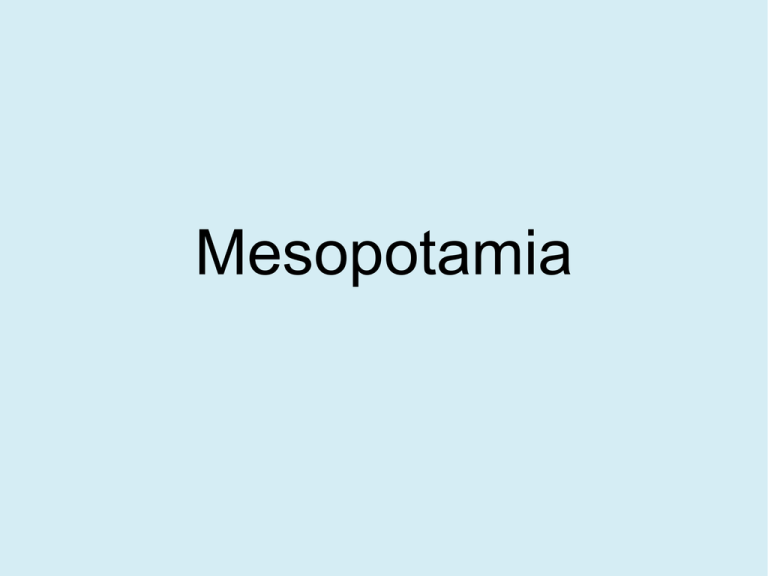
Mesopotamia The Impact of Geography • Greeks called the area between the Tigris and Euphrates rivers Mesopotamia • The area lies in The Fertile Crescent, a crescent shaped area from The Mederteranian Sea to the Persian Gulf with fertile soil Cont. • Little rain fell in the area but deposits of silt from the rivers made the land fertile. • Silt is a thick black mud with nutrients that is good for farming Cont. • Irrigation ditches were dug to water crops • The result a surplus or more food than the civilization needed The City States of Mesopotamia • All cities were surrounded by wals for defense • The city of Urk for example had a wall 6 miles long, with defense towers every 30-35 feet. Sumerian Cities • All walls and dwellings were built of sun dried mud bricks. City of Uruk Wall Gods Godesses and Rulers. • The most important building was the ziggurat or temple. • All town functions whether social, religous, or political took place at the ziggurat. Gods Godesses and Rulers Cont. The Ziggurat of Ur. Gods Godesses and Rulers Cont. • Gods and Godesses owned the cities. • People donated their time and wealth to building houses for the priests who served the Gods. Gods Godesses and Rulers Cont. • The Sumerians believed that the Gods ruled the cities. • A city ruled by a divine figure is a theocracy. Gods Godesses and Rulers Cont. • Eventually priests gave away power to kings. • Kings would raise an army, and protect the empire. • Priests worked with kings to solve problems in the empire. Economy and Society • Economy based on trade. 3 major social classes • Nobles- Priests and Royalty • Commoners- worked for palace and temple estates. 90% were farmers. • Slaves- Belonged to palace officials and were used for building projects. Empire • Around 2340 BC Sargon of Akkad defeated the Sumerian city states and set up the 1st empire. • An empire is a large country or state under one ruler. Sargon of Akkad • • His empire fell around 2100 BC In 1792 BC Hammurabi created the new empire of Babylon Hammurabi • Created the first uniform code of laws known as Hammuarbi’s Cod • Penalties were severe and were dictated by social class • A crime against a noble by a commoner or slave had the strictest punishment. • • • • Hammurabi Cont. Society was patriarchal or male dominated. Woman’s place was in the home Men could divorce women who did not bear them a child Adultery by a woman was punishable by death Religion • Gods and Godesses controlled the universe • They believed in about 3,000 gods and godesses • A belief in many gods is called Polytheism. Religion Cont. • Most powerful god Was Enlil. • Evuil Gods were known as the Wicked Udugs. • After death all people regardless of life went to the land of no return. Technology • Created a system of writing called cuneiform, which created impressions on clay and then allowed the clay to dry. Technology Cont. • • • • • Invented the wheel Invented the sail Invented the plow First to use bronze Created a base 60 number system
